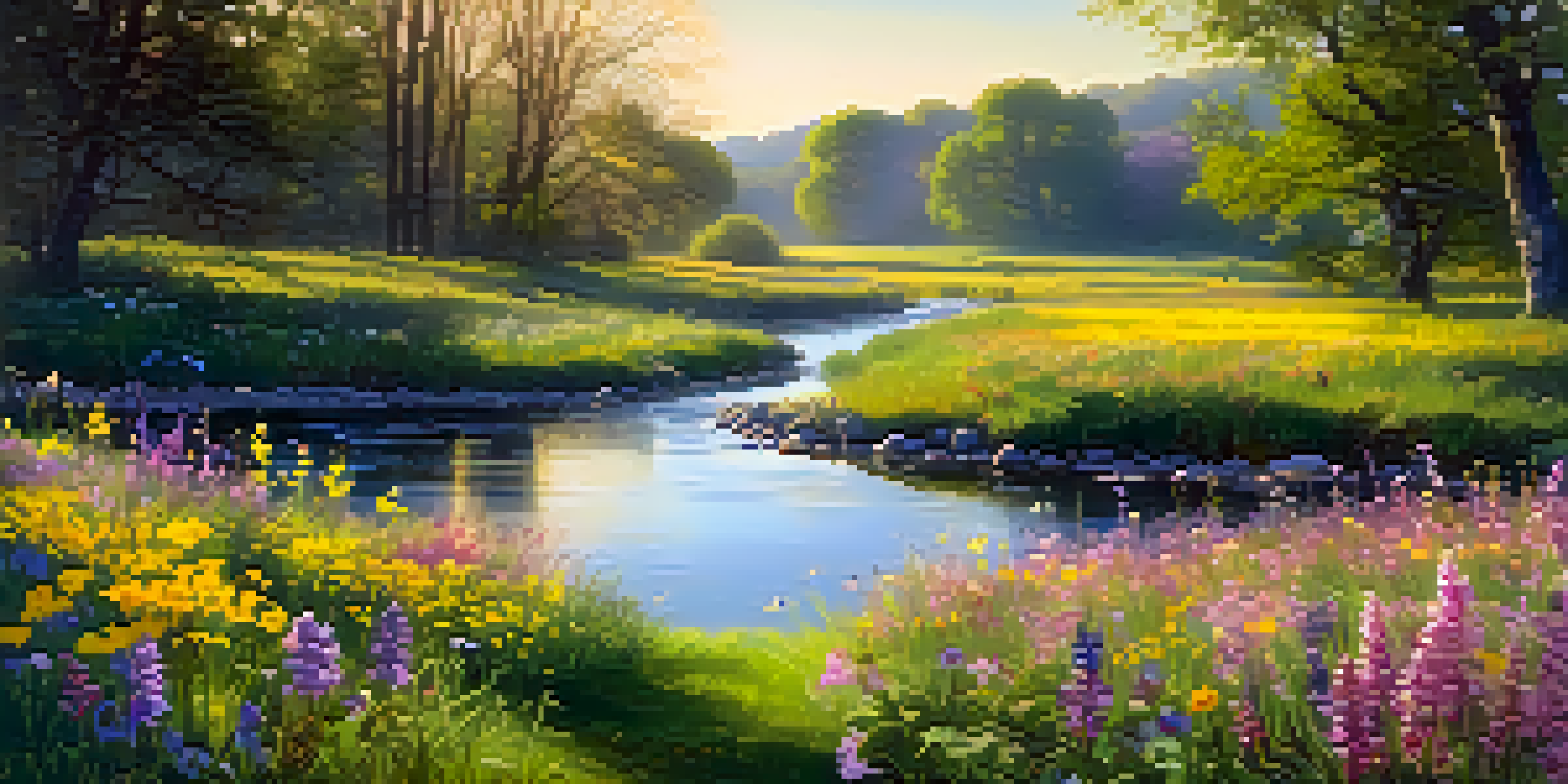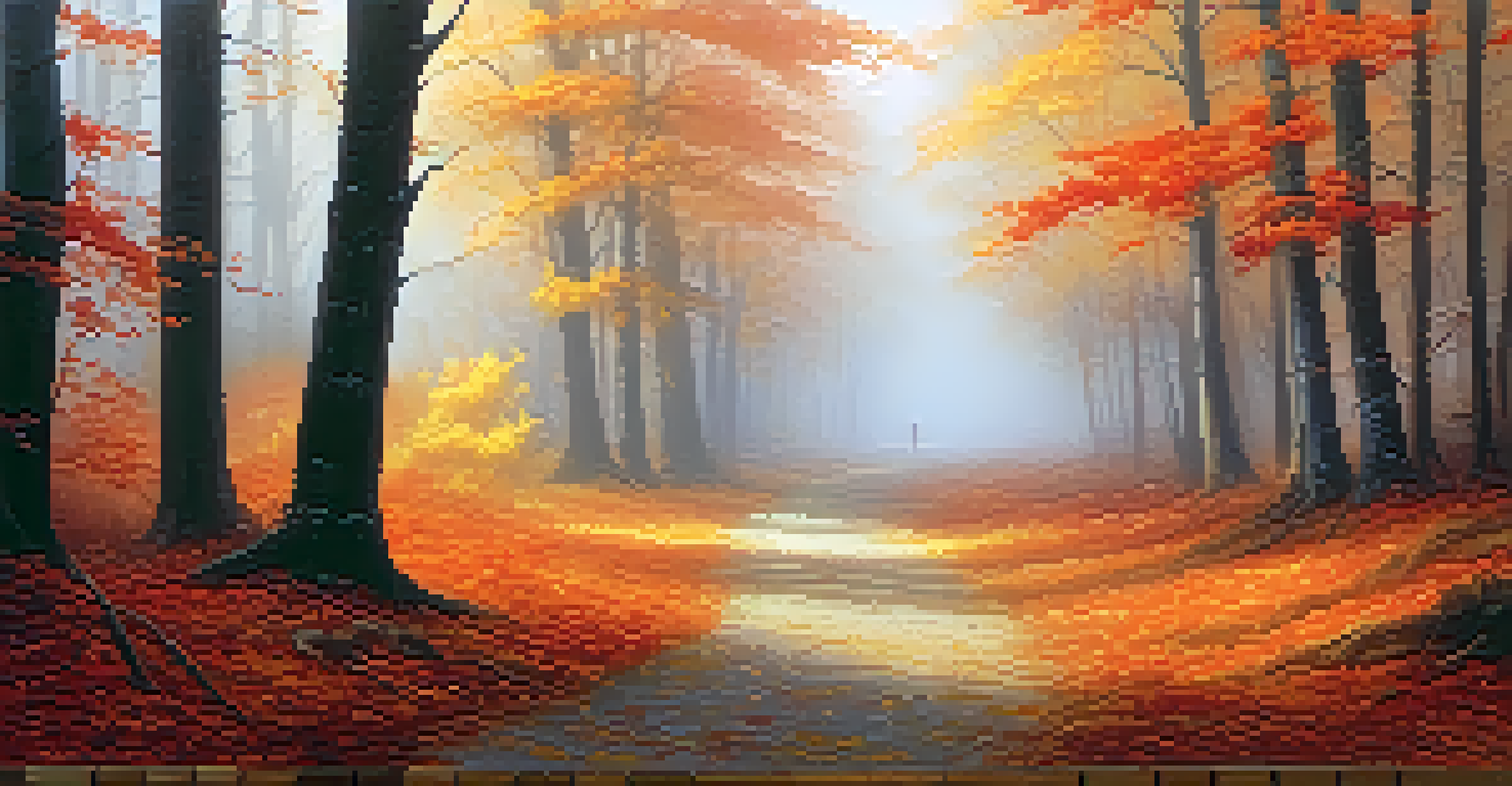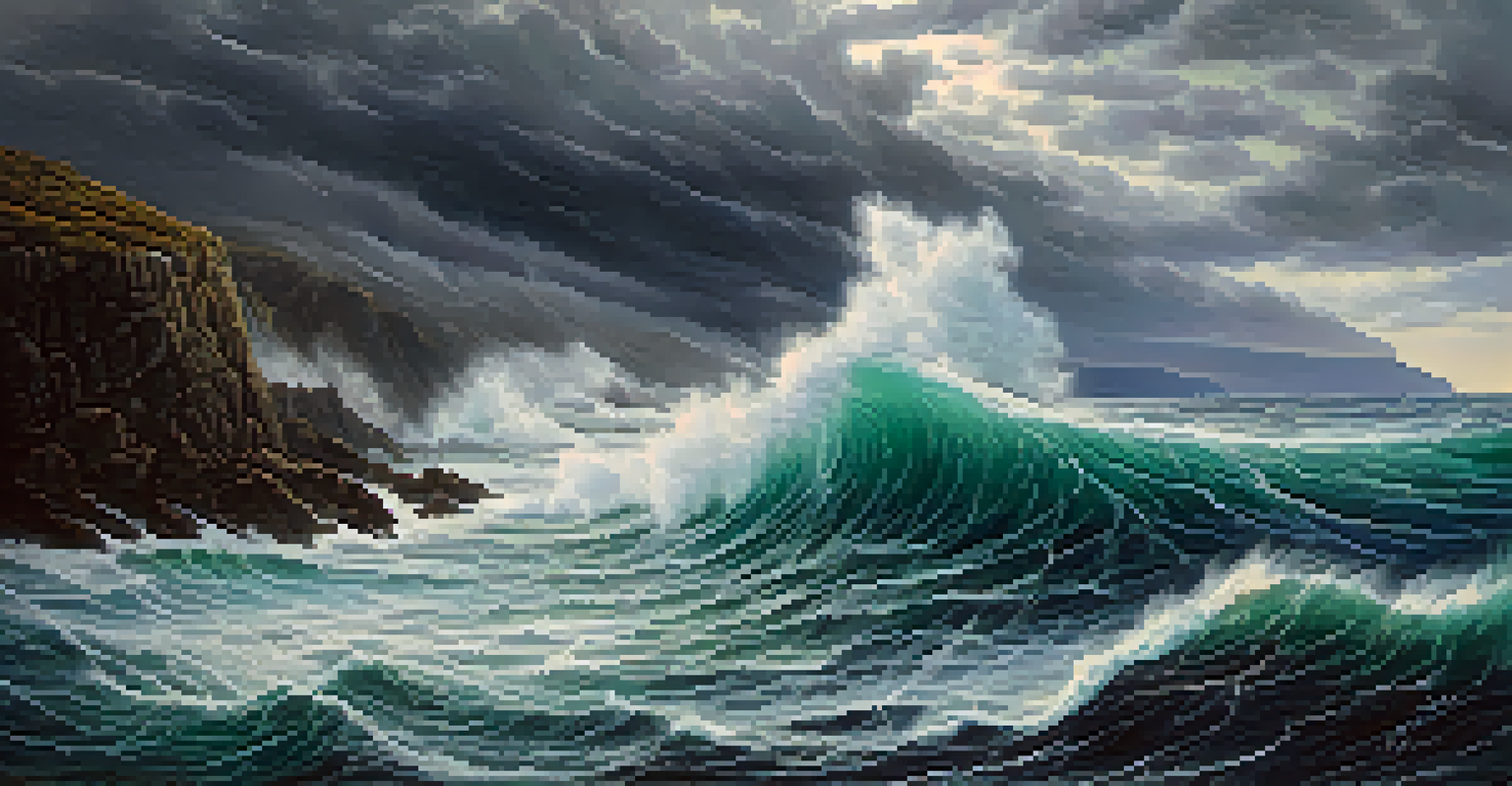The Emotional Landscapes in Art: Nature's Impact on Feelings

Nature as a Reflection of Human Emotion in Art
Art has long been a mirror reflecting the emotional landscape of humanity. Artists often draw inspiration from nature, using its beauty and turmoil to convey feelings. For instance, a stormy sky can evoke chaos, while a serene sunset might inspire peace. This interplay allows viewers to connect deeply with the emotions expressed through the artwork.
Nature is not a place to visit. It is home.
Consider the works of artists like Van Gogh, whose swirling skies in 'Starry Night' resonate with feelings of wonder and unrest. Nature serves not only as a backdrop but also as a catalyst for emotional expression. By tapping into natural elements, artists create a dialogue between the viewer's feelings and the artwork.
Ultimately, the emotional landscapes crafted by artists remind us of our own experiences and emotions, allowing us to feel seen and understood through their interpretation of nature.
Color and Emotion: The Palette of Nature's Influence
Colors in nature play a pivotal role in shaping our emotional responses, both in life and in art. Bright yellows and greens often evoke feelings of joy and vitality, while deep blues and grays can bring about introspection or melancholy. Artists skillfully manipulate these colors to elicit specific emotions from their audience.

For example, Claude Monet's use of vibrant colors in his water lily paintings captures the serene beauty of a garden, inviting viewers to experience tranquility. On the contrary, Edvard Munch's 'The Scream' employs stark contrasts and dark tones to express existential dread. This contrast highlights how color selection can transform a piece of art into an emotional powerhouse.
Nature Mirrors Human Emotions
Artists use elements of nature to reflect and evoke a wide range of human emotions, creating a deep connection with viewers.
By understanding the emotional resonance of colors derived from nature, artists can create compelling works that not only capture beauty but also resonate with the viewer's feelings.
Symbolism of Natural Elements in Artistic Expression
Natural elements often carry symbolic meanings that enhance the emotional depth of art. For instance, a wilting flower may symbolize loss or decay, while a blooming tree can represent new beginnings and hope. Artists strategically incorporate these symbols to communicate complex emotional narratives.
Art is the most beautiful of all lies; it is the truth that we can’t capture in words.
Take, for example, the use of water in art; it can symbolize fluidity, change, or even chaos. In contrast, mountains might represent stability or challenges. This rich symbolism invites viewers to interpret the artwork through their own emotional lens, fostering a personal connection with the piece.
Through the lens of nature's symbolism, artists create layers of meaning that engage the viewer on multiple emotional levels, allowing for a rich and varied interpretation of their work.
Nature's Seasons: A Journey Through Emotional Cycles
The changing seasons serve as a powerful metaphor for emotional cycles in art. Spring often embodies renewal and hope, while autumn may evoke nostalgia and reflection. Artists frequently draw parallels between these seasonal shifts and the emotional experiences of life.
For instance, the vibrant blooms of spring can signify new beginnings, as seen in many Impressionist paintings. Conversely, the starkness of winter may reflect isolation or introspection, as depicted in works that emphasize desolate landscapes. This cyclical nature of seasons resonates with our own emotional highs and lows.
Colors Shape Emotional Responses
The colors found in nature influence emotional reactions, with artists skillfully using these hues to enhance the feelings conveyed in their work.
By mirroring these seasonal changes in their work, artists invite viewers to reflect on their own emotional journeys, creating a shared understanding of the human experience.
The Role of Nature in Evoking Nostalgia and Memory
Nature often evokes powerful memories and nostalgia, which artists capitalize on to connect with their audience emotionally. Specific landscapes or natural elements can remind us of childhood, love, or loss, enriching the viewer's experience of the artwork. This link between nature and memory deepens the emotional impact of art.
For example, a painting of a familiar forest might trigger memories of childhood adventures, creating a sense of longing and warmth. Artists use this emotional pull to draw viewers into their world, allowing them to explore their own memories through the lens of the artwork.
By tapping into the nostalgia associated with nature, artists craft pieces that resonate on a personal level, reminding us of the beauty and complexity of our own life experiences.
Nature's Influence on Artistic Techniques and Styles
The physical characteristics of nature have also influenced various artistic techniques and styles throughout history. From the fluid brushstrokes of Impressionism to the detailed realism of landscape painting, artists adapt their methods to capture the essence of the natural world. This evolution reflects their emotional responses to what they observe.
For instance, the loose, vibrant brushwork of Impressionist painters allows them to convey movement and light, mirroring the transient beauty of nature. Meanwhile, hyper-realistic artists focus on intricate details, evoking a sense of awe and reverence for the natural world. Both styles foster emotional connections with their audience.
Nature Enhances Artistic Techniques
The characteristics of nature not only inspire artistic subjects but also shape the techniques artists use to express their emotions.
In this way, nature not only inspires the subject matter of art but also shapes the techniques through which emotions are expressed, creating a dynamic relationship between the artist, their medium, and the viewer.
The Therapeutic Power of Nature in Art Creation
Engaging with nature can serve as a powerful therapeutic tool for artists, allowing them to process their emotions and experiences. Many artists find solace in natural settings, often using these moments to inspire their work. The act of creating art in nature can foster a sense of peace and clarity.
For example, plein air painting encourages artists to immerse themselves in their surroundings, capturing the beauty of nature while simultaneously reflecting on their emotional state. This connection can lead to profound insights and healing, transforming personal struggles into artistic expression.

By embracing nature in their creative processes, artists not only enrich their work but also cultivate emotional well-being, highlighting the symbiotic relationship between art and the natural world.